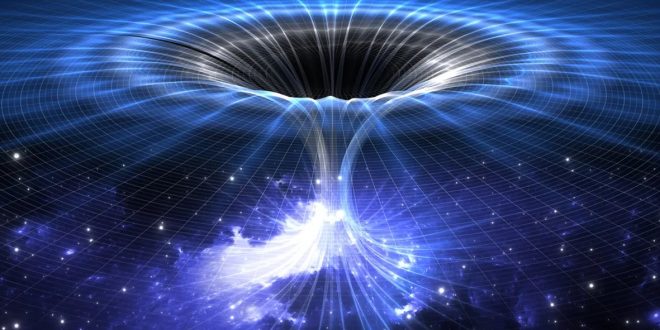According to physicists, wormholes in space, if they exist, resemble black holes from a certain perspective, raising the possibility that we have already encountered this long-sought phenomenon.
Exciting phenomena like black holes, hypernovas, and merging neutron stars abound in the known universe. But all of those appear mild in comparison to things that physicists believe might be out there but haven’t yet discovered. Wormholes, which theoretically connect segments of space and time and give users a shortcut to far-off places, are probably foremost among these.
Science fiction authors, who would otherwise be cut off from the star systems they wished to explore due to physical laws prohibiting faster-than-light travel, were greatly relieved by the prospect of wormholes. Although many physicists doubt they exist, or at the very least that three-dimensional objects could pass through them unharmed, the mere possibility inspired writers to build a spaceship or at the very least complete a novel.
However, as telescope technology improves, a troubling question emerges: if wormholes exist, why haven’t we discovered any? In Physical Review D, four physicists from Bulgaria put forth a solution: perhaps we already have them but haven’t realized it.
The vast majority of black holes that have been found can be identified either by their gravitational effects on nearby stars or by the material jets that emerge from their accretion disks. It’s unlikely that we would know if any of these were wormholes. The polarization around M87* as observed by the Event Horizon Telescope Collaboration and its follow-up on Sagittarius A*, on the other hand, are a different story. In these instances, we observed the object’s shadow cast against its event horizon, and we might have anticipated detecting something if we were actually observing a wormhole.
Since the beginning of November, 12 papers exploring the possibility of wormholes have been posted to ArXiv.org. This indicates how intriguing physicists find the idea. We don’t know what they would look like, as Petya Nedkova of the University of Sofia and fellow authors point out.
In order to address that, the paper comes to the conclusion that wormholes would appear to be completely new to us when viewed from high angles. However, the authors believe a wormhole would exhibit “a very similar polarization pattern” to a black hole for small inclination angles. Therefore, we wouldn’t know if M87*, which is visible at an estimated angle of 17°, is a wormhole.
That does not imply that we will always be unable to distinguish between wormholes and black. The polarization intensity in the wormhole spacetimes can increase by up to an order of magnitude in comparison to the Schwarzschild black hole, the authors report. “More significant distinctions are observed for the strongly lensed indirect images,” they write. The lensing in question is not caused by a large object that is in our way and the hole that is acting as a gravitational lens. Instead, it results from photons’ paths being warped by the massive gravitational field of the black hole, which causes them to make a partial loop around the hole before coming toward us.
If we assume, as the authors do, that matter or light could travel through a wormhole in either direction, the situation becomes even more complicated. Consequently, they anticipate that “signals from the region beyond the throat are able to reach our universe” if this is the case. These will alter the polarized image of the disk that we see surrounding the hole because the light coming from other sources will have different polarization characteristics. The authors refer to this as “a characteristic signature for the detection of wormhole geometry,” and it might offer that.
It’s important to be able to tell wormholes apart from black holes before getting too close, aside from the interest in finding them to confirm their existence and the possibility that they could enable interstellar travel. Nedkova said to New Scientist, “If you were nearby, you would find out too late.” “You’ll learn the difference when you either pass through or die.”
The authors acknowledge that the “simplified model of a magnetized fluid ring” used to arrive at their conclusions. A wormhole and a black hole can be distinguished from one another in other ways using more complex models that may reveal differences.
 Tech Gadget Central Latest Tech News and Reviews
Tech Gadget Central Latest Tech News and Reviews




